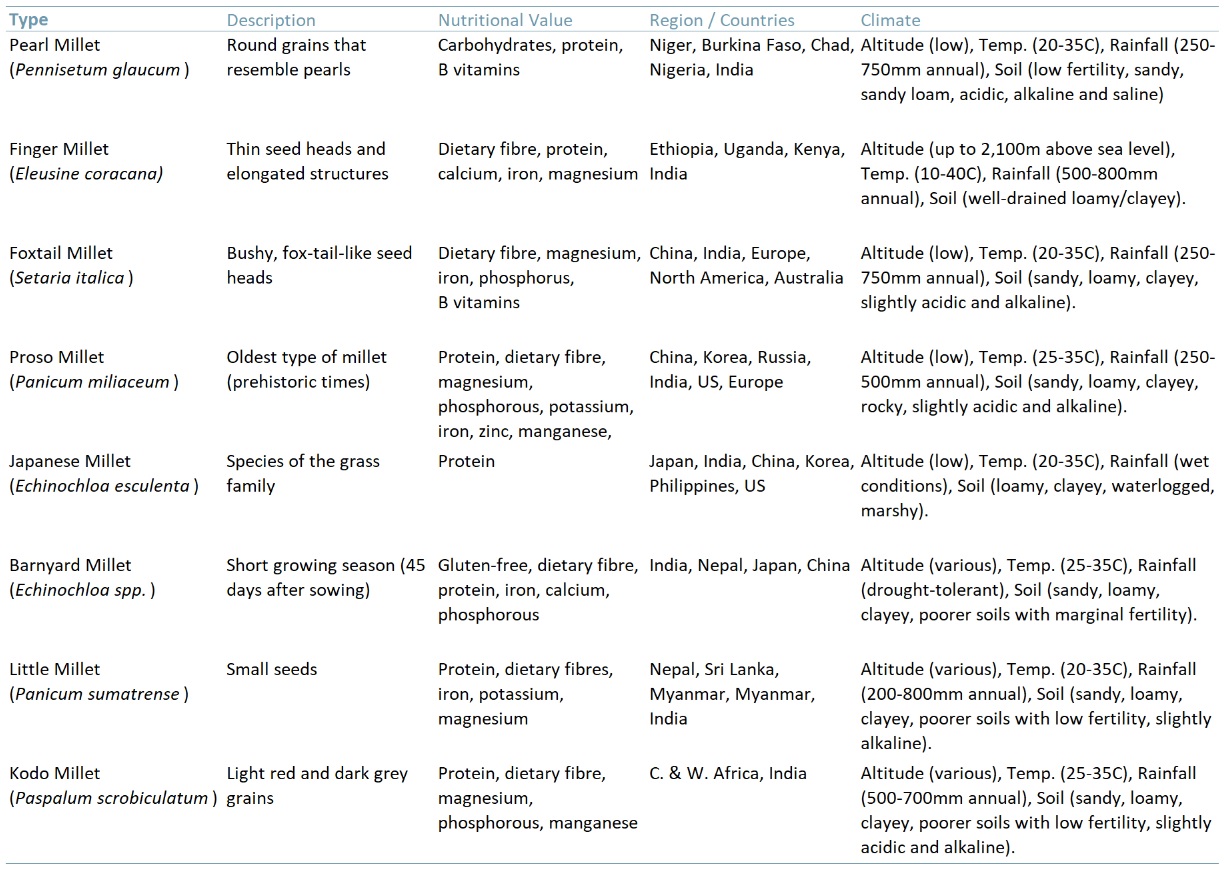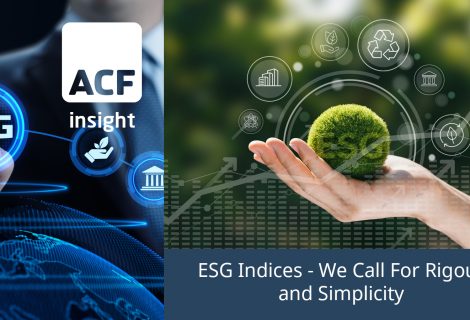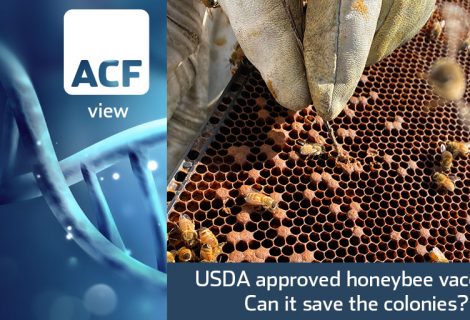Climate change and the [re]emergence of millet
A potential ‘new’ agricultural market with strong growth prospects is in the making thanks to climate change. The ancient grain millet is making a comeback due to its short growth season that boosts crop rotation – moving farming away from, or perhaps back to, traditional crops. In recognition of this, in 2021 the United Nations (UN) declared that 2023 would be the International Year of Millets (IYM2023).
The IYM2023 initiative, led by the Food and Agricultural Organization (FAO), is raising awareness of the nutritional and health benefits of millets and their ability to grow under adverse and changing climate conditions. Millet has the potential to provide a new sustainable market opportunity.
In central Missouri, Midwest USA, a farmer has been growing Japanese millet since 1993. The original idea was to diversify and generate more income, however he discovered that millet costs less and worked well with his crop rotation, compared to his traditional crops of corn and soybeans.
A brief history of millet
Archaeological evidence shows that millet was cultivated in China (Yellow River region – area of Northern China that’s traversed by this river and often considered the birthplace of Chinese civilization) as early as 7,000 BC. From there, it spread to India, Africa and Europe.
Millets are small-seeded grains and come from the grass family, Poaceae. There are ~20 different species of millet, but eight are widely recognized (exhibit 1). Each type of millet has adapted to a range of different environmental conditions from the semi-arid tropics of Africa to the temperate climates of E. Asia and Europe.
Exhibit 1 – Types of millet (the most common)
 Sources: ACF Equity Research; FAO.
Sources: ACF Equity Research; FAO.
The transition from corn and soybean
Alternative grains like millet are edging out traditional crops such as corn and soybeans driving by the following characteristics:
- Climate Resilience: Millets are more drought-resistant and heat-tolerant than corn and soybeans. They can grow in poorer soils and require less water, which makes them well-suited to areas that are expected to become more arid (dry) due to climate change.
- Nutritional Benefits: Millets are highly nutritious, providing dietary fibre, protein, and a variety of vitamins and minerals (exhibit 1). They are also gluten-free, making them suitable for people with gluten intolerance or celiac disease.
- Food Security: A diversified crop mix strengthens food security and reduces dependence on a small number of staple crops. A variety of crops can ensure sufficient food supply if one crop fails due to diseases, pests or inclement weather.
- Economic Benefits: Crop diversification can provide economic benefits by unlocking new markets and reducing their exposure to price fluctuations in a single crop. Millets often have lower input costs compared to corn and soybeans as they require less irrigation and can thrive without high-quality soils or intense fertilizer use.
- Sustainability: The lower water and fertilizer needs of millets make them a more sustainable choice in regions where water is scarce or where there is a desire to reduce agriculture’s environmental impact.
- Policy and Research Attention: With increasing recognition of the benefits of crop diversity and the need for climate-smart agriculture, millets could receive more policy support and research funding.
While these factors might encourage a shift towards growing more millet, it’s worth noting that large-scale changes in agricultural systems take time and depend on many factors, including farmer knowledge and attitudes, market demand, and policy support. Nonetheless, millets have significant potential to contribute to more resilient, nutritious, and sustainable food systems.
Millet and sustainability
Millet has the potential to be a crucial player in sustainable farming, economic and social solutions. Its cultivation and consumption contribute to several of the United Nations Sustainable Development Goals (UNSDGs).
- Goal 1 – No Poverty & Goal 8 (Promoting inclusive & sustainable economic growth) – Decent Work and Economic Growth: Endorsing millet cultivation can invigorate rural economies and provide [additional] income for small farmers in regions where millet is traditionally grown.
- Goal 2 – Zero Hunger: Millet’s nutrient-rich profile (rich in vitamins, minerals, and proteins) can fight food insecurity. It is also resilient to harsh and variable weather conditions, making it a reliable source of food.
- Goal 3 – Good Health and Well-being: As a whole-grain, gluten-free grain with a low glycaemic index, regular consumption of millet can help prevent non-communicable diseases like diabetes, heart disease and obesity.
- Goal 6 – Clean Water and Sanitation: Millet requires less water to grow than many other grains (1kg of millet requires 400 litres versus 4,000 litres for 1 kg of rice – Tata Consumer Products). Its cultivation makes it a viable option in regions with water scarcity.
- Goal 12 – Responsible Consumption and Production: Millet cultivation can promote crop diversity, improving soil health by preventing over-reliance on a few staple crops. It also reduces susceptibility to pests and disease.
- Goal 13 – Climate Action: Millet’s ability to thrive in a range of challenging climate conditions makes it a good choice in the face of climate change.
- Goal 15 – Life on Land: Growing millet ticks this UNSDG box by improving soil health and biodiversity.
As the global population is forced to migrate towards gluten-free and or plant-based diets (in the face of climate change), millet’s obscurity will decline. Millet appears to be moving towards centre stage as agricultural markets seek diversified risk and food consumption trends change.
Millet has recently appeared on the menus of fine dining restaurants in India. A Michelin starred restaurant in Dubai using millet was showcased at a White House state dinner. Chef Rahul Rana at Avatara in Dubai said “it is one of the most beautiful ingredients to cook with in the kitchen.”
Once known as the ‘poor man’s cereal’, millet is also used in consumer goods. Large-cap food combine companies like Nestlé S.A. (NESN.SW), Britannia Industries Ltd (BRITANNIA.NS), Tata Consumer Products Ltd (TATACONSUM.NS) as well as entities such as Slurrp Farm (private, based in Gurgaon, Haryana, India) are creating millet-based products, e.g. pancake mix, biscuits and cereals.
Although millet has not yet achieved broad global acceptance as a grain and investment remains uninspiring, our view is that this will change and millet is poised to become a rapidly growing market. Resistance to new/ancient grains in hyper developed economies is much reduced. We suspect that the drivers (innovation, health, sustainability and even survival) are favourable for an upcoming inflection point.
Author: Renas Sidahmed – Renas is ACF’s Head of ESG and a Staff Analyst. See Renas’ profile

![Climate change and the [re]emergence of millet Climate change and the [re]emergence of millet](https://acfequityresearch.com/wp-content/webpc-passthru.php?src=https://acfequityresearch.com/wp-content/uploads/2023/08/ACF_Millet-a-new-sustainable-market-_Twitter.jpg&nocache=1)


















